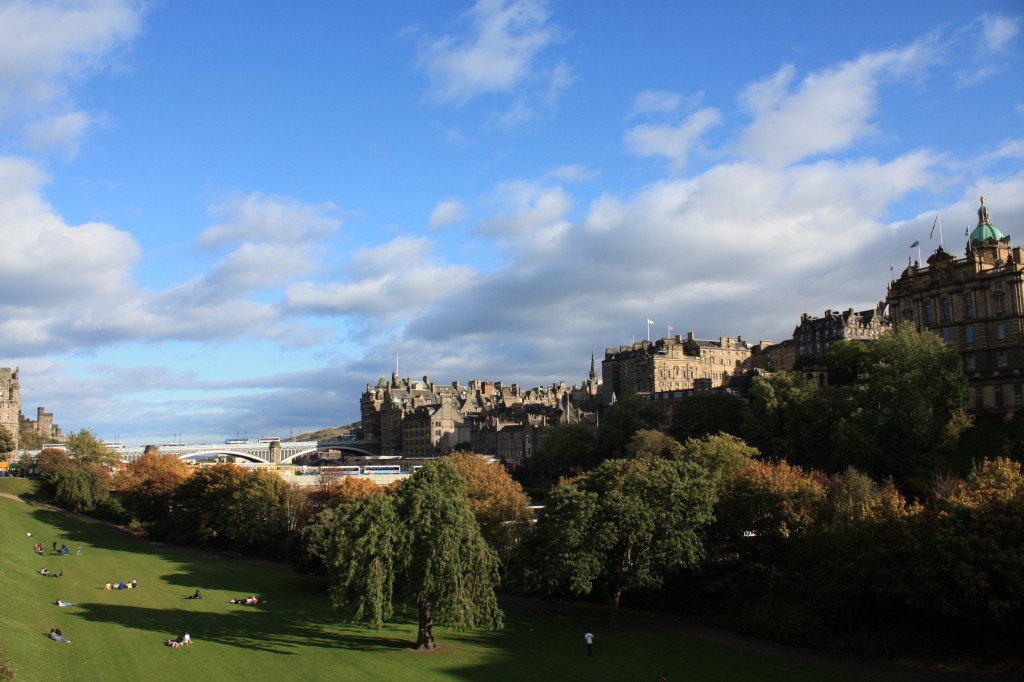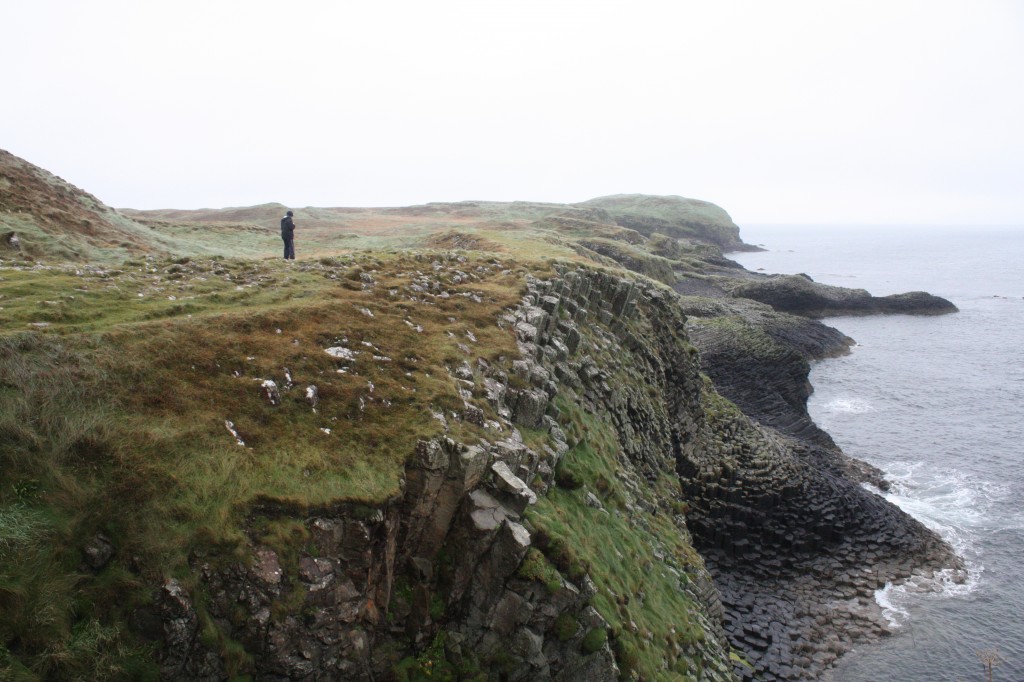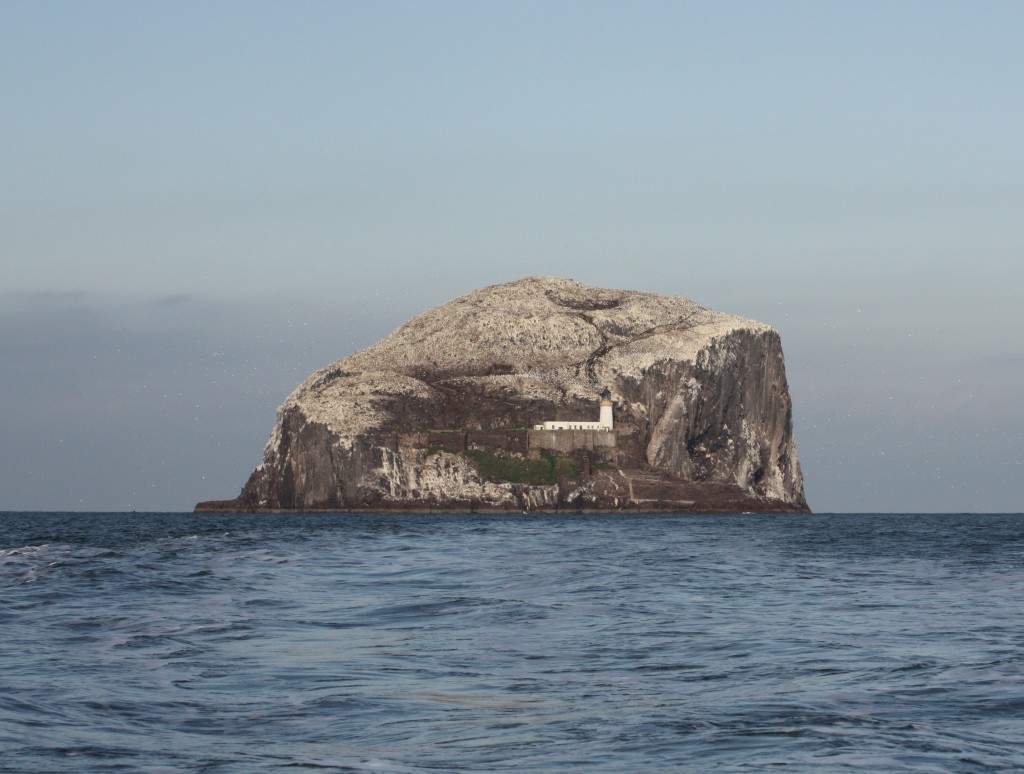
After centuries of English domination, the Scots are taking back their country, reclaiming national identity as the Edinburgh Parliament slowly wrests control from London, gaining new parcels of sovereignty bit by bit. The pride is evident: Blue flags are flying, Gallic lessons are filling up and designers are rebranding men in kilts as – oh yes – sexy.
At the same time, greater national sovereignty has led to a green revolution in Scotland: Old trees are taking root once again; an eco-erotic shop opened in Edinburgh; venison and wild boar adorn organic menus; majestic predatory birds are now nesting; and there’s even talk of bringing wolves back to stalk the hills. With new freedom to set many of its own laws, the Scottish government is taking bolder and more ambitious moves to set higher environmental credentials than almost any other country in the world.
A year ago, the government set for the independent-minded country a legally binding target to reduce carbon-dioxide emissions by 42 per cent by 2020 over 1990 levels. Half the country’s energy will be supplied by renewable energy, mostly by wind. And thanks to the spectacularly strong swells where the North Sea meets the Atlantic, Scotland is leading the world with groundbreaking tidal- and wave- power projects. In March, the government picked 10 new projects – including the world’s first commercial wave and tidal plants, prompting First Minister Alex Salmond to dub Scotland the “Saudi Arabia of marine energy.” Up to a third of the United Kingdom’s energy needs may one day be served by the seas. First up for tidal power: the idyllic island of Islay, home to the world’s “peatiest” – meaning smokiest – whiskies, such as Laphroaig and Bowmore.
Rail lines are being electrified, including between Glasgow and Edinburgh. Forests are being replanted; rather than the postwar monocultures of evergreen trees for the timber trade, diverse forests of native broad-leafed deciduous trees now flourish. Bird species lost just a century or two ago are being reintroduced, such as eagles and ospreys, thanks to National Trust breeding programs.
And enterprising Scottish citizens are restoring their heritage too. On the Alladale Reserve in the farthest north of the country (home to the luxury Alladale lodge and spa) populations of elk, wild boar and otters are being nurtured. The owner of the private land hopes – controversially – to complete the restoration with the wolves, bears and lynx that used to roam the landscape. More than just nostalgic, such predators would restore the highland’s environment, keeping the country’s sapling-devouring deer population in check.
From predators to peaty whiskies to pleasure products, Scotland’s brave eco-stance beckons.

A GEOLOGICAL WONDER
Austere and sensible the changes may be, but the Scottish landscape is anything but. Formed from a completely different landmass than England, it is the very definition of sublime: misty mountains, craggy valleys and surprisingly spectacular islands. Take the unrivalled Isle of Staffa. A small, uninhabited rock 10 kilometres from the nearest port, it has been home to a solitary family in the 18th century and, even further back, one lone hermit. There are no trees, no bushes and no boulders (use the loo on shore before heading out), just a handful of nesting seabirds and the occasional seal pup. Not much else, save for a rain-drenched donation box for the National Trust of Scotland hewn into the rock. That’s it.
Except for the rocks – hexagonal basalt columns – and the multicoloured grass covering them. It’s just like the Giant’s Causeway in Ireland (Staffa is the geological tail end of it) except draped sideways. There, I finally understood why anyone would be interested in geology – and why the discipline was born in Scotland. The wayward piles of hexagons, like Play-Doh or cake icing squeezed through a template, look too sequenced to be natural. The soaring and tumbling bunches of basalt literally look painted onto the landscape. Most enchanting of all is Fingal’s Cave – fit to inspire the famous overture by Mendelssohn.
The nearest island is tiny green Iona, famed as the birthplace of Celtic Christianity. A stone’s throw from the cathedral’s ancient tombstones, gardens of leafy salads, potatoes and other vegetables are grown for the Argyll Hotel and the St Columba, certified organic in 2008. The St Columba hotel sources 90 per cent of its salads and 30 per cent of their root vegetables from the garden, heats water with solar energy and creates biodiesel from cooking oil. Both hotels have been recognized by Visit Scotland’s Green Business Tourism Scheme.

THE ALCATRAZ OF THE NORTH
Off the coast about a half-hour from Edinburgh lies Bass Rock – described as one of the wildlife wonders of the world by Sir David Attenborough, home to the largest single colony of gannets and the site of the ruins of a 16th-century prison (dubbed the Alcatraz of the North) that was the inspiration behind Robert Louis Stevenson’s Catriona, the sequel to Kidnapped.
Catch a boat to Bass Rock from the Scottish Sea Bird Centre, home to puffins, seals and the gannets. The centre features a myriad of fun and subtly educational playthings for kids, including remote-controlled cameras that let them explore the islands and zoom in on seals, puffins and gannets from afar.
Or for a more involved experience, from August to April, you can help uproot and control the invasive tree mallow on the neighbouring islands of Craigleith and Fidra. The alien plant (probably introduced on the islands for makeshift toilet paper on account of its broad, soft leaves) grows up to three metres tall and has overrun the islands, blocking burrows and preventing puffins from nesting, causing their population to plummet from 28,000 pairs to just a few thousand. Since the effort began, puffin numbers have started to recover. “We really are seeing a huge difference now – we can see areas of the rock that we haven’t seen in over 10 years,” says Maggie Sheddan of the Craigleith Management Group, a guide on the centre’s boat trips.
There are new threats to the birds though, she says: Changing sea currents linked to climate change have led to declines in the populations of the fish on which the birds feed, meaning they need the help even more.
have led to declines in the populations of the fish on which the birds feed, meaning they need the help even more.
Special to The Globe and Mail
WHERE TO STAY
St Columba Hotel Isle of Iona, Argyll; 44 (0) 1681-700-304;www.stcolumba-hotel.co.uk. Sustainability awards: Silver – Green Business Tourism Award from Visit Scotland. Double room: $190.
Argyll Hotel Isle of Iona, Argyll; 44 (0) 1681-700-334;www.argyllhoteliona.co.uk. Sustainability award: Gold – Green Business Tourism Award from Visit Scotland. Double room: $144.
Loch Ossian Youth Hostel Corrour, by Fort William; 44 (0) 1397-732-207;www.syha.org.uk/hostels/highlands/loch_ossian.aspx. Sustainability award: Gold – Green Business Tourism Award from Visit Scotland. Cost: $25 a night. Grey-water recycling, solar and wind panels, compost toilets and a vegetable garden – but no showers or fridges.
Apex Waterloo Place Hotel 13-27 Waterloo Place, Edinburgh; 44 (0) 131-523-1819; www.apexhotels.co.uk. Green Business Tourism Scheme. From $134. An urban hotel with eco-friendly chemicals and green policies.
Radisson SAS Glasgow 301 Argyle St., Glasgow; 44 (0) 141-204-3333;www.radissonblu.co.uk/hotel-glasgow. Gold – Green Business Tourism Award. From $157.
WHERE TO EAT
Iglu 2b Jamaica St., Edinburgh; 44 (0) 131-476-5333; www.theiglu.com. Specializes in organic, wild and local fare at reasonable prices, including vegetarian haggis samosas, Shetland mussels, wild boar and, because you’re in Scotland, Aberdeen Angus rump steak.
Stravaigin 2 8 Ruthven Lane, Glasgow; 44 (0) 141-334-7165;www.stravaigin.com. Global, local, organic, fair trade – the works, with chic and sophisticated decor.
WHAT TO DO
Climb a mountain: After enjoying Arthur’s Seat, head to Cairngorm Mountain (www.cairngormmountain.com; Gold – Green Business Tourism Award from Visit Scotland). If your bones can’t take the hike, trains here generate energy that is sold back to the grid. Cairngorm now offers biodegradable “poo bags” to visitors (yes, human “deposits” were a problem).
Drink whisky: Peaty drams from Islay, such as Laphroaig, Lagavulin, Bowmore and Caol Ila, are renowned for their uniquely Scottish smoky flavour. Soon the entire island will be powered by tidal energy. On the mainland, in Speyside, sustainability award-winning Roseisle distillery (operated by Diageo, which owns Johnny Walker) will recycle its water and produce just 15 per cent of the carbon-dioxide emissions of a typical distillery. Cut down on packaging and pour it straight from the cask at boutique shop Demijohn in Glasgow or Edinburgh (www.demijohn.co.uk).
Shop for vintage in Glasgow: Best bet: Starry Starry Night, 19 Dowanside Lane, Glasgow; 44 (0) 141-337-1837. This is the oldest vintage shop here; it features dresses, top hats and opera costumes up to 200 years old.
Explore eco-erotica in Edinburgh: Organic Pleasures, 71 Broughton St., Edinburgh; 44 (0) 131-558-2777; www.organicpleasures.co.uk. Organic satin corsets for $315, blindfolds from $47.25, and more.
Go birding: The Harbour, North Berwick; 44 (0) 1620-890-202; www.sea bird.org. Gold – Green Business Tourism Award from Visit Scotland.